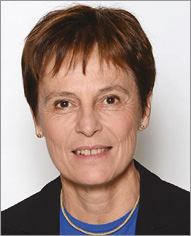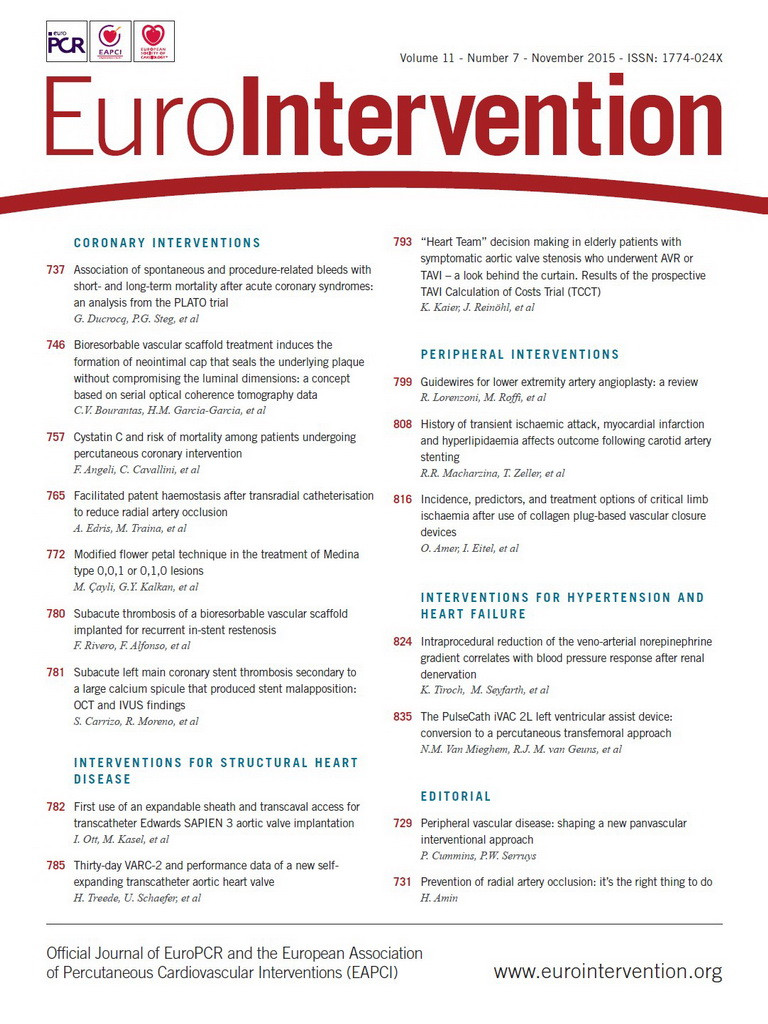NEWS
![]() Interventionalist under 36? Apply to the EAPCI Training and Research Grants programme 2016 before 15 January 2016
Interventionalist under 36? Apply to the EAPCI Training and Research Grants programme 2016 before 15 January 2016
![]() Next year there will be important elections for the new Board of the European Association of Percutaneous Cardiovascular Interventions (EAPCI), which will take office and serve your Association for the period May 2016 - May 2018 under the presidency of Michael Haude (Germany). Apply for the available positions: President-Elect, Treasurer, Secretary
Next year there will be important elections for the new Board of the European Association of Percutaneous Cardiovascular Interventions (EAPCI), which will take office and serve your Association for the period May 2016 - May 2018 under the presidency of Michael Haude (Germany). Apply for the available positions: President-Elect, Treasurer, Secretary
http://www.escardio.org/The-ESC/Communities/European-Association-of-Percutaneous-Cardiovascular-Interventions-EAPCI/News
![]() EAPCI Website. A new design aimed at improving browsing with smartphones and tablets has been launched with new user-friendly features such as a top news area, regular highlights and an association events calendar.
EAPCI Website. A new design aimed at improving browsing with smartphones and tablets has been launched with new user-friendly features such as a top news area, regular highlights and an association events calendar.
![]() EAPCI Young National Ambassador: Apply to become an active member of the interventional community to enhance the educational and professional growth of our “Young” members
EAPCI Young National Ambassador: Apply to become an active member of the interventional community to enhance the educational and professional growth of our “Young” members
http://www.escardio.org/The-ESC/Communities/ESC-Young-Community/Young-interventionalists/eapci-young-national-ambassador
EAPCI Focus on the EAPCI TAVI and TMVR Survey
Anna Sonia Petronio, Co-Chair Databases & Registries Committee

Anna Sonia Petronio, Co-Chair Databases & Registries Committee
For many years, the EAPCI has promoted a number of significant initiatives to increase best treatment modalities and concurrently develop interventional therapies. One of the most recent initiatives has been Stent for Life (SFL), an important programme that has many affiliated countries and which aims to promote and facilitate the correct treatment of STEMI by the organisation of STEMI networks for primary PCI (pPCI).
In 2014, based on the landmark experience of SFL, the EAPCI under the presidency of Stephan Windecker began a new initiative named Valve for Life (VFL). This new programme aims to promote knowledge concerning the prevalence, diagnosis and treatment of valvular heart disease, now increasing progressively due to an ageing population, and where there is an unmet need in most countries. In parallel with this increased burden of valvular heart disease, our professional community has seen new developments and also the implementation of new minimally invasive percutaneous procedures. The percutaneous approach to valvular heart disease has been proven to be particularly efficacious in high-risk subsets.
In order to provide a reliable framework concerning the situation in Europe today with regard to this field of transcatheter interventions, EAPCI has promoted a Survey on TAVI and TMVR, the two most commonly used treatments in percutaneous valve intervention. The best way forward for a well-focused programme on VFL is to find out how different European countries have in practice built a valve programme as well as to understand which areas are lacking and where there are gaps or disparities.
The Survey also intends to focus on how different centres deal with the main topics raised in the guidelines and in more recent literature in this field: the structure and consensus of a Heart Team, the methodology used in patient selection, imaging evaluation choice, decision making on device selection, and the willingness to implement new technologies.
The Survey will be launched in November for a duration of two months. The EAPCI and its Databases & Registries Committee rely on the help of European centres. We feel that the information obtained from this initiative will be of great help for the VFL programme and will identify current thoughts on structural valve procedures in the whole community and the need for new recommendations. As the SFL and other EAPCI initiatives have shown, this new initiative not only is considered to have a scientific purpose but also intends to assess the best quality of care for patients in a rapidly evolving therapeutic context in spite of the current negative economic situation.

